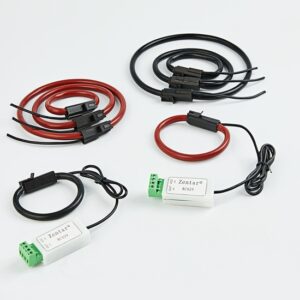Understanding the RCD Concept
Residual Current Devices, often referred to as RCDs, are fundamental safety mechanisms in electrical circuits. They provide protection by automatically disconnecting the power supply whenever the live conductor current at a given point in the phase surpasses a predetermined value.
Unveiling the Type B RCD
RCDs come in various types – A, AC, and B, each differentiated by the characteristics of the residual current they can handle, including DC components. While Type A and AC RCDs have similar operating principles, both based on measuring leakage value through zero-sequence current transformers, their application scope and magnetic characteristics of their transformers set them apart.
Type B RCDs stand out with their expanded protective capacity. They are designed to cover the application range of Type AC and beyond, offering reliable protection for residual pulsating DC current and residual pulsating DC current superimposed on a smooth DC current of 0.006 A.
Beneath their complex design, Type B RCDs extend their protective cover to AC current, pulsating DC, and smooth DC current. They have higher design requisites compared to Type A devices, ensuring safe tripping under various conditions, including:
a) Conditions already covered by Type A. b) Residual sinusoidal AC current up to 1000Hz. c) Residual AC current superimposed on a smooth DC current of 0.4 times the rated residual current. d) Residual pulsating DC current superimposed with 0.4 times the rated residual current or a smooth DC current of 10mA, whichever is higher. e) Residual DC current from the rectification lines.
The Rising Applications and Prospects of Type B RCDs
The advent of new energy solutions and summertime’s heightened demand has thrust RCDs, particularly Type B devices, into the spotlight. They play a critical role across various spheres of life, offering indispensable protective capabilities.
Photovoltaic systems, for instance, are increasingly relying on Type B RCDs. Given the complexity of the leakage current components, the small current amplitude, and the less by-value current in photovoltaic systems, Type B RCDs, with their ability to measure both AC and DC leakage current, are the most suitable choice. They detect leakage currents effectively, triggering fast shutdowns when needed.
Despite their promising prospects and growing popularity in the international markets, Type B RCDs have yet to claim significant market share domestically. Currently, most households still rely on AC-type RCDs that only detect sinusoidal AC wave current. The situation gets risky when a fault current contains a DC component that, when flowing through the transformer, results in a steady magnetic induction intensity and shifts the transformer’s operating state.
Trends
At present, the production of Type B transformers faces hurdles including technical barriers, absence of specialized chips, and high costs. However, these challenges also present unique opportunities for manufacturers who dare to innovate. With market demand on an upward trend and the potential for growth massive, businesses that can find solutions to these challenges stand to gain significantly. By investing in the research and development of Type B transformer chips and continual cost optimization, these businesses can capture a larger market share and secure their growth.
Thus, while the journey towards Type B RCD dominance might seem fraught with difficulties, the potential rewards make it a venture worth pursuing.




